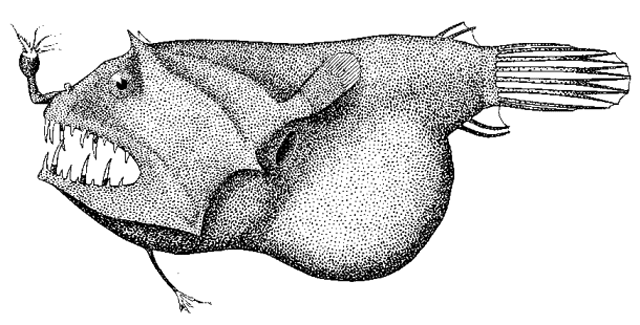| Linophrynidae (Leftvents) |
| 4.3 cm SL (male/unsexed) |
|
bathypelagic; marine; depth range 150 - 2000 m |
| Indo-Pacific. |
|
Metamorphosed females distinguished by the following characteristics: escal bulb with distal pair of fringed anterior filaments; medial distal papilla with short filaments present; one or two pairs of stout distal posterior filaments; simple tapering appendage emerging from behind escal pore; barbel with short, stout, undivided stem, length 10-17% SL to base of series of 5-6 short branches, each with a number of branched filaments at distal tip; filaments and transparent distal part of primary branches with numerous, small, globular luminous organs, internal, sessile, or set on short stalks; lower jaw without symphisial spine. Males without pointed sphenotic spines. Larvae, males and juvenile female with two lateral rows of large subdermal melanophores along side of body, with concentration at base of caudal fin (Ref. 86949). |
| Also mesopelagic (Ref. 7300). |
|
Least Concern (LC); Date assessed: 11 October 2018 Ref. (130435)
|
| harmless |
|
Source and more info: www.fishbase.org. For personal, classroom, and other internal use only. Not for publication.

